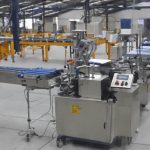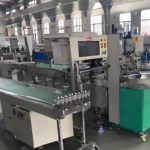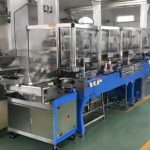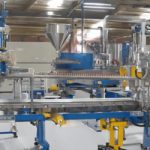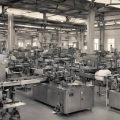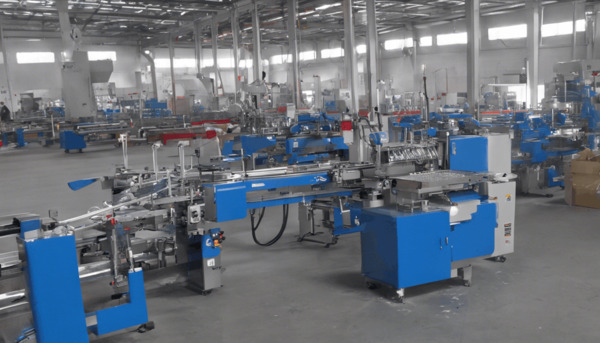
Understanding Folding Boxes
Folding boxes, commonly referred to as folding cartons, are a type of packaging that is widely used across various industries. These boxes are typically made from paperboard and are designed to be folded into shape, providing a versatile and cost-effective solution for packaging needs. The term “folding box” encompasses a range of packaging types, each serving different purposes depending on the product they are meant to contain.
1. Straight Tuck End (STE) Boxes
Straight tuck end boxes are a popular choice for packaging products such as cosmetics, electronics, and food items. These boxes have tuck flaps on both ends that fold in the same direction, providing a clean and professional appearance. The design allows for easy assembly and closure, making them a convenient option for manufacturers.
2. Reverse Tuck End (RTE) Boxes
Reverse tuck end boxes are similar to straight tuck end boxes, but the tuck flaps fold in opposite directions. This design provides additional structural integrity, making it suitable for heavier products. RTE boxes are commonly used in the pharmaceutical and retail industries.
3. Lock Bottom Boxes
Lock bottom boxes, also known as auto-lock bottom boxes, feature a bottom that automatically locks into place when the box is assembled. This design provides added strength and support, making it ideal for heavier items. These boxes are often used for packaging beverages, glassware, and other heavy products.
4. Crash Bottom Boxes
Crash bottom boxes, or crash lock boxes, have a pre-glued bottom that folds flat for storage and pops into place when needed. This design offers quick assembly and is suitable for high-speed packaging lines. They are commonly used in the food and beverage industry.
5. Sleeve Boxes
Sleeve boxes consist of an outer sleeve that slides over an inner tray or box. This design provides a premium look and is often used for luxury products, gift sets, and promotional items. Sleeve boxes offer flexibility in design and can be customized with various finishes and embellishments.
1. Solid Bleached Sulfate (SBS)
SBS is a high-quality paperboard made from bleached virgin wood pulp. It offers excellent printability and a smooth surface, making it ideal for high-end packaging. SBS is often used for cosmetics, pharmaceuticals, and food packaging.
2. Coated Unbleached Kraft (CUK)
CUK is made from unbleached wood pulp and features a natural brown color. It is coated to enhance printability and provide a barrier against moisture and grease. CUK is commonly used for beverage carriers and other applications where strength and durability are important.
3. Folding Boxboard (FBB)
FBB is a multi-layered paperboard made from mechanical and chemical pulp. It offers a good balance of strength and printability, making it suitable for a wide range of packaging applications. FBB is often used for food packaging, pharmaceuticals, and personal care products.
1. Cost-Effectiveness
Folding boxes are an economical packaging solution due to their lightweight and efficient use of materials. They can be produced in large quantities at a relatively low cost, making them ideal for mass production.
2. Customizability
Folding boxes can be easily customized to meet specific branding and design requirements. They can be printed with high-quality graphics, logos, and text, allowing companies to create a unique and recognizable brand presence.
3. Versatility
The versatility of folding boxes allows them to be used for a wide range of products, from food and beverages to electronics and cosmetics. They can be designed to accommodate different shapes and sizes, providing a tailored packaging solution for any product.
4. Sustainability
Folding boxes are often made from recyclable materials, making them an environmentally friendly packaging option. Many manufacturers are also adopting sustainable practices, such as using recycled paperboard and eco-friendly inks, to reduce their environmental impact.
1. Food and Beverage Packaging
Folding boxes are widely used in the food and beverage industry for packaging products such as cereals, snacks, frozen foods, and beverages. They provide a protective barrier against contamination and help maintain product freshness.
2. Pharmaceutical Packaging
In the pharmaceutical industry, folding boxes are used to package medications, supplements, and medical devices. They offer tamper-evident features and can be printed with important information, such as dosage instructions and expiration dates.
3. Cosmetic and Personal Care Packaging
Folding boxes are commonly used for packaging cosmetics and personal care products, such as skincare creams, perfumes, and hair care items. They provide an attractive and professional presentation, enhancing the perceived value of the product.
4. Retail and Consumer Goods Packaging
Retail products, including electronics, toys, and household items, are often packaged in folding boxes. These boxes offer protection during transportation and storage, while also serving as a marketing tool on store shelves.
Conclusion
Folding boxes, or folding cartons, are an essential component of modern packaging solutions. Their versatility, cost-effectiveness, and customizability make them a popular choice across various industries. Whether used for food, pharmaceuticals, cosmetics, or retail products, folding boxes provide a reliable and sustainable packaging option that meets the needs of both manufacturers and consumers.
